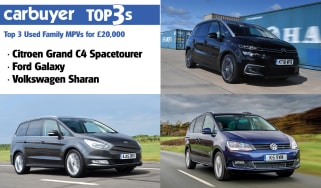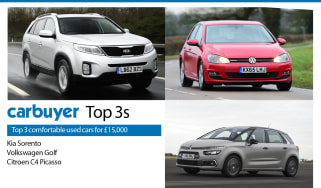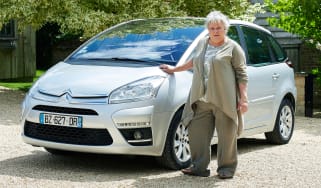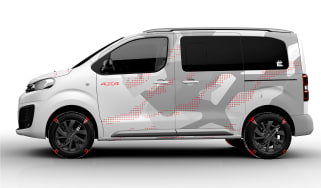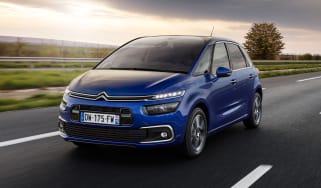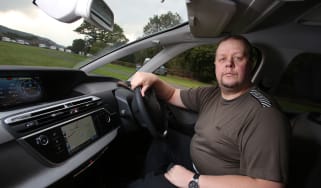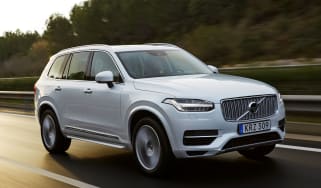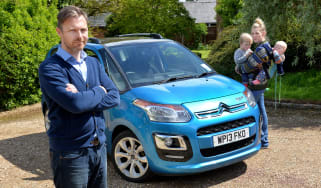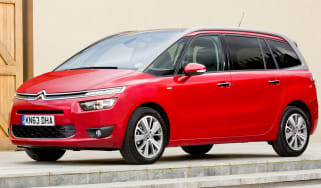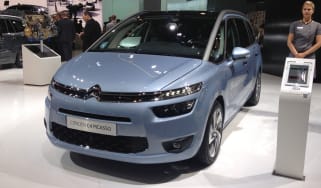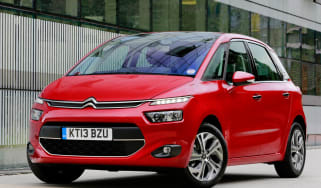Citroën C4 SpaceTourer MPV (2013-2019)
"The Citroen C4 SpaceTourer is cheap, spacious and good looking – everything you’d want in a family car.”
Pros
- Wide choice of engines
- Cheaper than rivals
- Good looks
Cons
- Rivals handle better
- Some reliability issues
- Some versions poorly equipped
Previously known as the Citroen C4 Picasso, the Citroen C4 SpaceTourer is an MPV that goes up against the Ford S-MAX, Volkswagen Touran and BMW 2 Series Gran Tourer, as well as medium-sized SUVs like the Mazda CX-5. The C4 SpaceTourer is no longer available to order, but very low mileage examples are still available at prices that are competitive against its rivals.
Besides its price, the C4 SpaceTourer gets a lot right. Unusually for its class, it’s styled with flair; the SpaceTourer looks far better than just a box on wheels, with a curved roof and sweeping grille. The good news continues with its well designed and spacious interior – it only seats five, but it does so while striking a great balance between passenger and luggage space. Higher-spec models were fitted with seats that can be individually adjusted to optimise the balance of knee and boot space but boot space is generous regardless of the seating arrangement.
In true large Citroen style, the C4 SpaceTourer prioritises passenger comfort. The car’s suspension is very good at soaking up bumps, but the trade-off is an MPV that can’t quite offer a keen driver the same thrills as a Ford S-MAX or even a Mazda CX-5 SUV.
More reviews
Engine choices were broad. There are three petrols and three diesels; the entry-level BlueHDi 100 1.6-litre diesel and Puretech 110 1.2-litre petrol were only available with a manual gearbox, but all others are available with an automatic, too.
The three petrol models are the PureTech 110, PureTech 130 and THP 165. The first two are 1.2-litre four-cylinder units, with 108 and 128bhp respectively, while the 2.0-litre four-cylinder THP 165 produces 163bhp – enough for a 0-62mph in 8.4 seconds. This engine is only available with an automatic gearbox.
Diesel is likely to be the fuel of choice for most buyers: the choices are between 99 and 118bhp versions of a four-cylinder 1.6-litre turbodiesel (BlueHDi 100 or 120), or a 148bhp 2.0-litre turbodiesel (BlueHDi 150). The two 1.6-litre models are the most economical, with average fuel consumption of 74.3mpg (according to the older NEDC test).
Three trim levels were offered: Touch Edition, Feel and Flair. The entry-level Touch Edition model was bargain-priced, but still has essentials such as air-conditioning and a seven-inch touchscreen infotainment system with Bluetooth and DAB digital radio. Rear parking sensors and 16-inch alloy wheels complete a generous specification.
Feel adds larger 17-inch alloy wheels and aluminium window surrounds, plus front parking sensors. Inside, the infotainment screen grows to 12 inches and incorporates navigation. As befits the name, Flair adds extra sophistication, with a panoramic sunroof and part-leather interior. It also gains a reversing camera and self-parking facility, hands-free tailgate opening and blind-spot monitoring.
One letdown is the C4 SpaceTourer’s uninspiring reputation for owner satisfaction. It finished 42nd out of the 75 cars ranked in our 2017 Driver Power survey, with reliability ranked well below average. In our 2020 results, Citroen came a middling 18th out of 30 manufacturers overall.
On the plus side, the car received the full five-star rating in independent Euro NCAP crash-testing, thanks in part to an autonomous emergency braking system, although this is only available as part of a costly option package.
Overall, Citroen claims the C4 SpaceTourer delivers stress-free family transport. This is certainly true when you’re driving or travelling in it, but might not be so accurate when it comes to the ownership experience.




